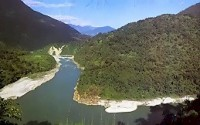MacArthur Foundation and UNESCO undertook a research program in north east India

From January 2001 to December 2005, assisted through a grant from the MacArthur Foundation, UNESCO implemented a research project in two study sites, namely, Namdapha and West Kemeng area of Arunachal Pradesh.
Hotspot of biodiversity
With over 100 culturally distinct ethnic societies and hosting a wide range of forest types as well as national parks and wildlife sanctuaries, the region is considered a “hotspot” of global biodiversity.

The damage
The rapid decline in the forest cover called for an urgent need to reverse the damage. Hence a research team of scientists initiated a five year-long research.
The achievements
By the end of the program a network of over thirty scientists from six different institutions located within and outside Arunchal Pradesh had worked together and, in summary, achieved the following:
- © UNESCO - Arunachal Landscapes - Arunachal wildlife

